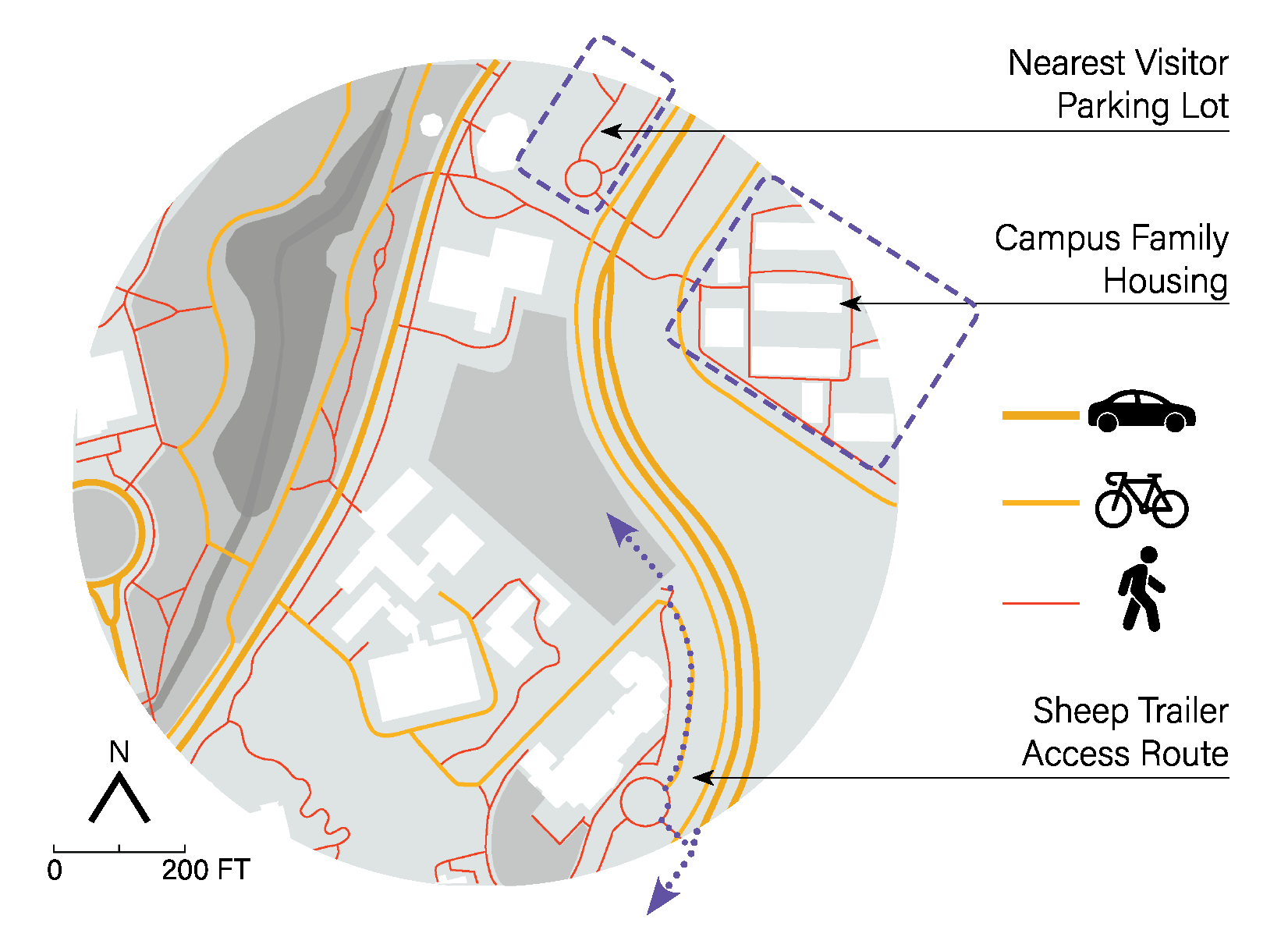Site Selection
What makes a good grazing site?
-

Accessibility
The research site must be accessible by the truck and trailer used to transport the sheep. Additional high traffic roads/pathways encourage the interactions between people and sheep.
-

Amenities
Nearby buildings are able to provide amenities including food and restrooms. Additional supplies such as tables and chairs can be added to the site to encourage visitors to stay.
-

Water Source
In order to provide water for the sheep, hoses are connected to the nearest water source, typically a spigot, in order to fill a water trough placed within the grazing area.
-

Shade
To avoid heat stress in sheep and humans, proper shade should be present. Shade structures such as tents and umbrellas effectively attract people to visit and stay. On the other hand, sheep are leery of artificial structures and prefer shade through vegetation.
Site Analysis
Site Map
Site 1: Solano Field
Accessibility
Solano Field is situated at the southeast edge of the UC Davis campus. The lack of centrality of this space resulted in a low turn out of university students and faculty. In contrast, being immediately adjacent to a major 2 way street garnered the attention of community members who frequented this route. Combined with designated visitor parking to the north and private hotel parking to the south made it easy for vehicle owning community members of the city of Davis to stop by and visit.
Amenities
The nearby buildings belong to the Environmental Horticulture department, who generously provided us with access to their water spigot and bathrooms. However, due to the length of the field, up to three hoses were needed to reach the water trough provided for the sheep. In addition, much of the building remained locked over the summer due to lack of use, resulting in the frequenting of the Hyatt Place hotel to utilize their restrooms.
Shade
Mature Coast Redwood trees grow along the entire southwest border of Solano Field. This results in little to no shade on the field in the mornings, but expands over the day. Meanwhile, the rest of the field remains uncovered.
Topography
The entire field experiences approximately 1 foot of elevation change. Despite the size of the field, its flat topography and extended field of view, combined with the limited pedestrian traffic, made it easy to keep track of visitor data.
Site 2: Silo Mound
Accessibility
The Silo Mound is one of the most centrally located lawn spaces on campus, second only to the Quad. The adjacent vehicular roads required gate code access and the nearest parking lot several walking minutes away. As a result, hundreds of visitors came to observe each day, nearly all of whom were either students or faculty members of the university.
Amenities
The centrality of this site resulted in the ease of access to a number of amenities. Restrooms could be found in any one of the nearby buildings. The Silo food court, the location reference point for the site, offers a variety of foods and drinks. The water source for the sheep trough is merely 25 feet (1 hose length) away. However, because the hose crosses a highly trafficked sidewalk, it must be removed when not in use to avoid creating a tripping hazard.
Shade
Trees of varying maturity are distributed around the site. Combined with the shadows of nearby buildings, ample shade is available throughout the day for both people and sheep.
Topography
The unique mounded topography of this site creates an iconic picturesque scenery when grazing sheep are introduced. Unfortunately, the 4 feet of elevation change significantly reduces the field of vision. This factor, combined with the high volume traffic and 360 degrees of accessibility made collecting data on the number of visitors more challenging.










